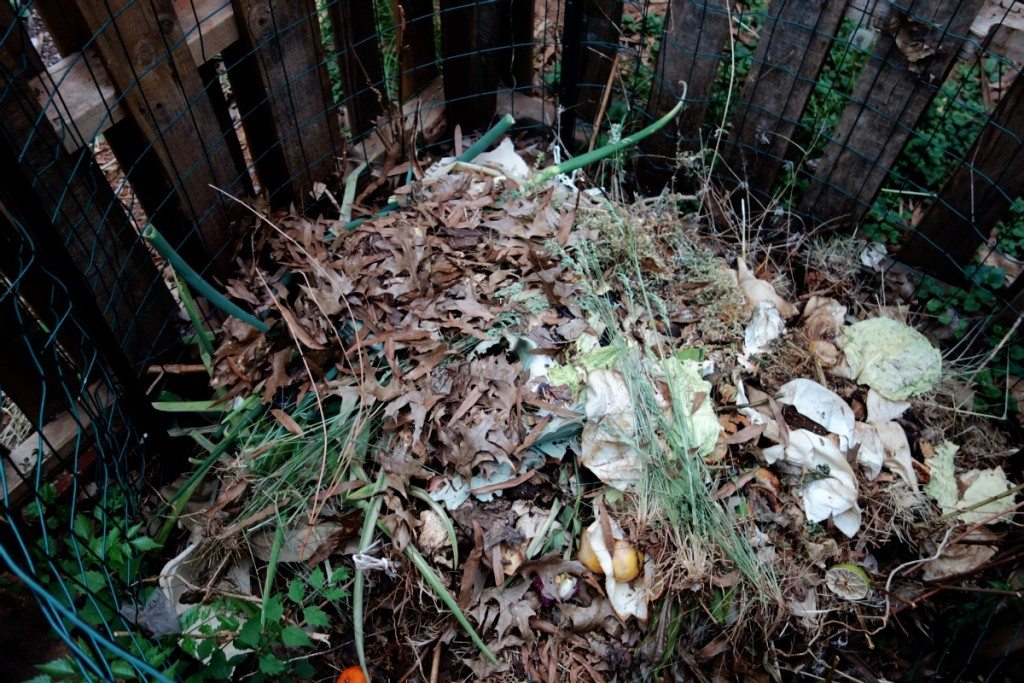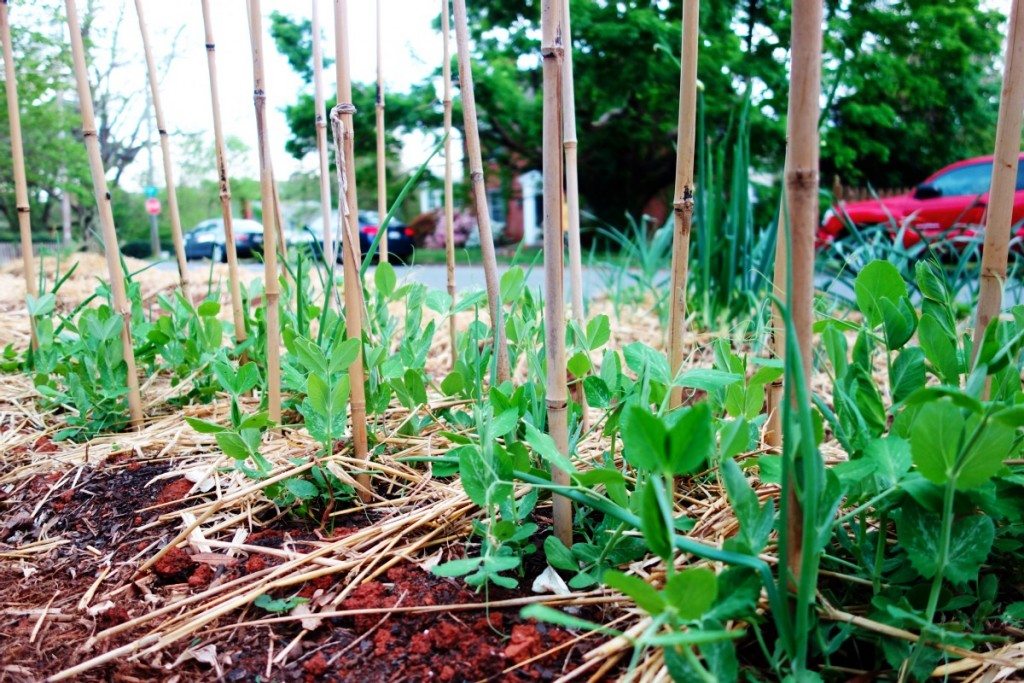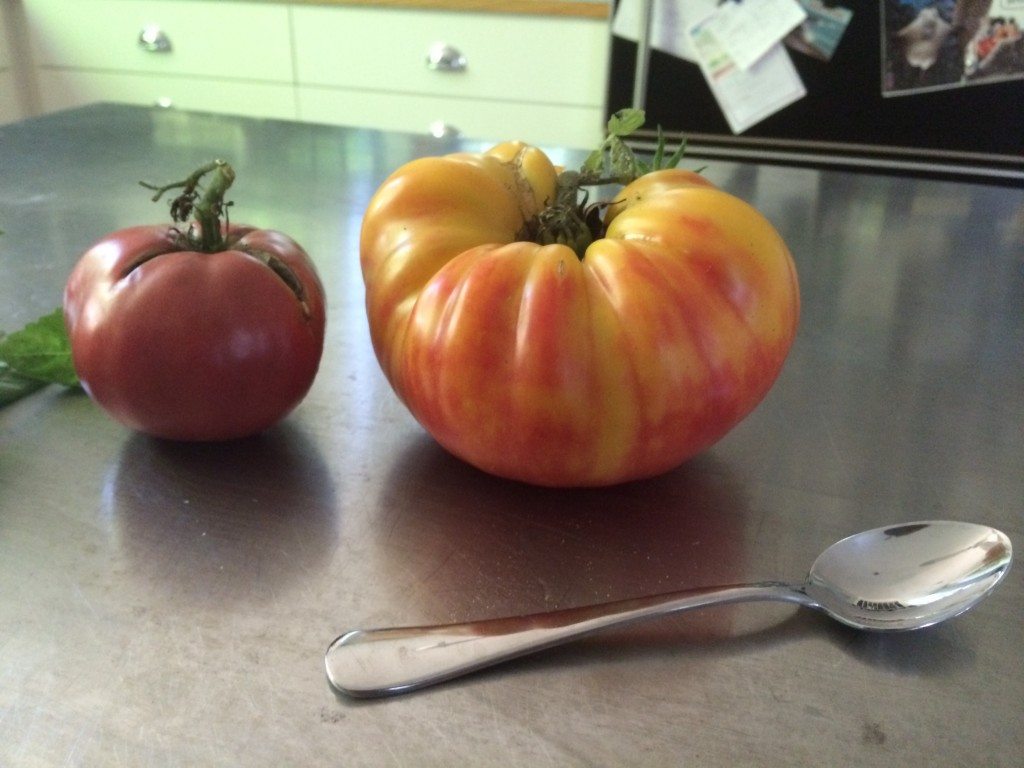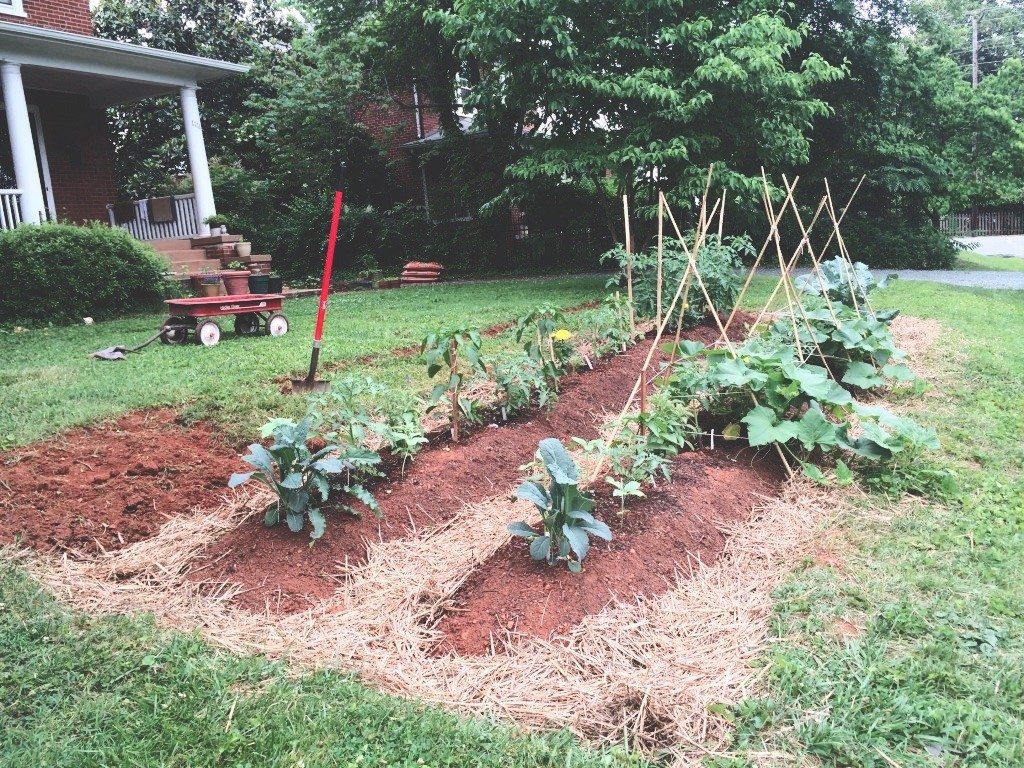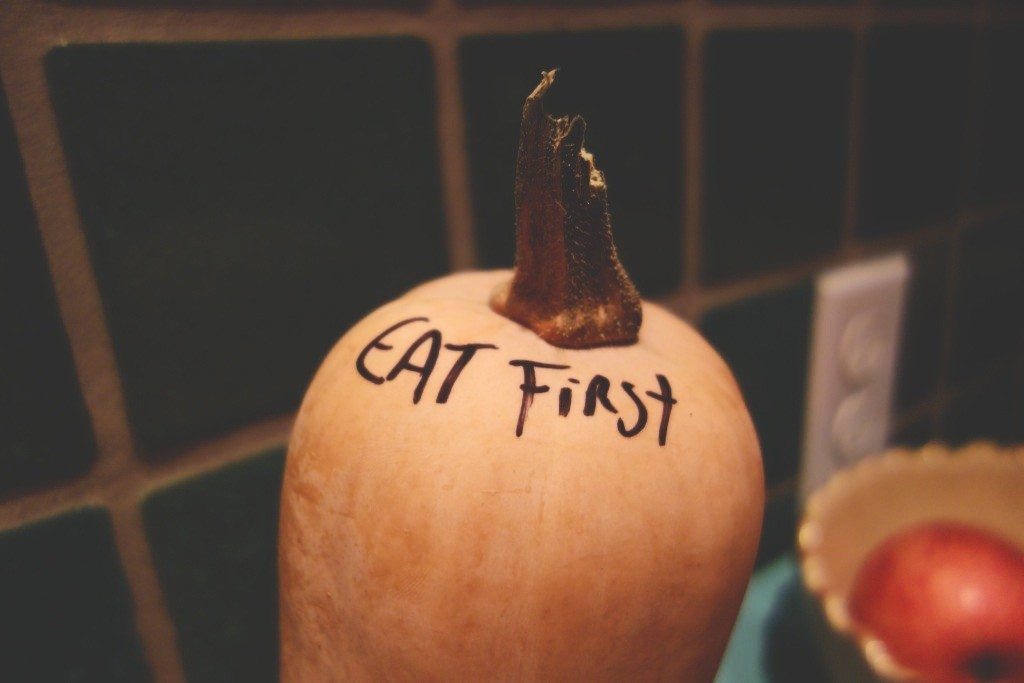A few years ago my wife and I received a black compost bin as a Christmas gift. That spring we collected food scraps and within a few months had filled the bin to its maximum level. We we so eager and hopeful that the food would break down into compost and be ready for summer.
Little did we know, we were making two crucial mistakes that would end any chance for healthy compost. If you have ever had questions about how to make compost, the two steps below fixed everything.
Crucial Mistake #1: we only filled the bin with food scraps.
I should have known something was wrong by the deathly smell and the legions of flies that hit my face every time I opened the lid to add food. Eventually, not wanting to go near the bin, we resorted to just letting it sit for six months, hoping nature would sort out the smell. Ignoring the bin failed, and with a flash of inner confidence, I kicked the bin over on its side- all 200 pounds of it. The lid broke off and a black gooey mush quickly clogged the hole where the lid had been. I used a hand shovel to remove the maggot-infested black sludge, abandoning both the bin and those months of compost-filled dreams altogether.
I knew there had to be an easier way. In search of a solution, I attended a composting lecture hosted by our local Master Gardeners club. The event was held at the county municipalities building, down the hall from the police department. I took a seat along with a group of older women. We were all surprised when a smartly dressed man took the stage. He started the talk describing how he left the tech start-up world to build a commercial composting company instead. Anyone who leaves a job in computers in order to go outside and do good in the world has my full attention.
The lecture was full of technical information about pH levels, soil temperature, beneficial bacteria, and moisture. If you are curious about those things, just do a google search…. But if you are like me, you really just want to know how to make composting in your backyard as simple as possible.
Here are some lessons I learned from the lecture that have been working well in my own backyard.
First, build a compost bin/container. (If you have a bike, read all 5 steps, if you drive a car, just skip to step #3)
#1 Find a shoe lace and put it in your pocket.
#2 Ride your bike to the hardware or agricultural & livestock supplies store.
#3 Buy chicken wire that is approximately 3′ x 12′. If you do not have cutters at home ask the folks at the store to cut the wire for you.
#4 Roll the chicken wire up like a yoga mat before you leave the store. Ask to borrow some tape to hold it secure.
#5 Take that shoelace from step #1 and tie it to the top and bottom of the chicken wire then throw it over your shoulder like a messenger bag so you can ride your bike home. Be careful not to get poked by the sharp wire ends of the fence.
NEXT → When you get home make this compost bin (it only takes 10 minutes).
Fixing Crucial Mistake #1: Add Food + Non Food to the bin
Every time you add food scraps to your bin, add double the amount of non-food scraps.
Example: if you add one container of food scraps that you have been saving under your kitchen sink to your compost bin, fill that same container two times with non-food scraps and add those to the bin as well.
Examples of Food Scraps: [Safe for composting]
Coffee grounds
Vegetable and fruit scraps
Egg shells (be sure they are free from yolk residue)
Tea bags
Examples of Non-Food Scraps: [Safe for composting]
Grass clippings
Fall Leaves
Shredded paper
Wood chips
Cardboard
Yard scraps (old plants, flowers)
Do not add these things to your compost:
Charcoal
Dairy products
Food sauces
Invasive weeds
Meat/fish/poultry
Bones
Pet feces
Any material containing preservatives/toxins
Fixing Crucial Mistake #2: It takes air, baby
You have the bin and you have been filling it up for the last few months. The bin is getting full. Excellent!
This is the critical next step.
#1 Take apart your chicken wire compost bin.
#2 Starting at the top of the pile use a pitchfork to deconstruct the pile one scoop at a time, piling it into a new pile a few feet away. This simple action of moving the pile adds a ton of air to the compost and that supercharges the pile to break down. *There is no need to put chicken wire around the new pile unless you have extra chicken wire lying around.
#3 Now take the chicken wire you had been using and re-construct a compost bin with it. This is going to be the location of your new compost pile.
Start using the chicken wire bin just like you had been using it months earlier. Don’t forget to add two parts non-food material every time you add food scraps.
After a few months, the bin will fill up and the first pile from several months earlier should be ready to use. Just take out any big chunks that have not yet broken down (throw them back in your compost bin) and use the finer finished compost in your garden.
Fixing these two crucial mistakes was all I needed to do to finally make compost that was both odor and maggot-free!
The process of creating compost from start to finish could take six months, or it could be much faster depending on where you live. Time is good.
